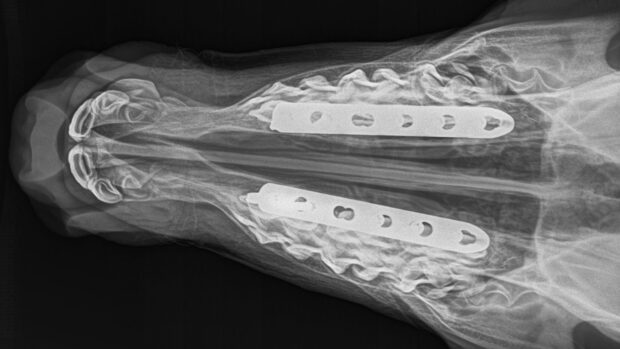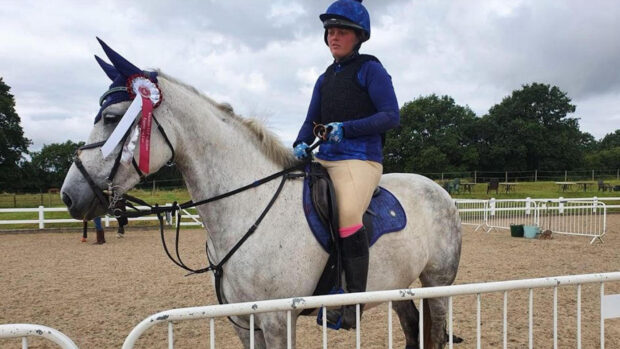The most frequent uses for laser surgery in horses at present are for the treatment of upper airway disorders and skin problems such as sarcoids. Lasers have also been used to perform neurectomies (surgical cutting of a nerve), and less commonly, surgery of the eye, uterus (removal of uterine cysts) and inside the joints of horses, combined with arthroscopes.
Internal use of laser surgery
Upper airway conditions that may be treated using laser surgery include:
- In horses with epiglottic entrapment, the fold of tissue entrapping the epiglottis can be transected with the laser fibre, freeing the epiglottis and allowing it to function normally.
- Axial deviation of the aryepiglottic folds a condition in the soft tissue of the larynx that can cause noise at exercise and reduced performance can also be treated by removing a portion of the fold .
- Treatment for roarers. Similarly, laser surgery can be used to remove the vocal cord or to obliterate the laryngeal ventricle (laser Hobday procedure) in horses with recurrent laryngeal neuropathy (laryngeal paralysis). Laser surgery has not replaced conventional surgery but the procedures can be combined.
- Soft palate surgery. The laser can be applied to the soft palate at numerous points in horses with dorsal displacement of their soft palate. This is the technical term for those that choke up or gurgle, making them slow down when they race. The principle of this treatment is to create more fibrous tissue in the soft palate making it stiffer in nature and hence less likely to displace. This is similar to treatment undertaken in humans to stop snoring.
- Laser can also be used to remove masses (such as cysts and tumours) or scar tissue that has formed in the upper airway and to remove the remains of ethmoid haematomas after formalin treatment.
- Guttural pouch tympany. A new opening can be created between the pharynx and guttural pouch allowing air to move out more easily.
Following laser surgery of the upper airway, horses are usually given anti-inflammatory treatment and, in some cases, antibiotics as well. Depending on the surgery performed, horses are normally kept rested for two weeks and provided that upper airway inflammation has reduced, they can resume normal exercise.
External use of laser surgery
Skin masses such as sarcoids, melanomas and other skin tumours may be removed by laser depending on their location and suitability for removal.
Lasers can also be used to assist management of wounds, e.g. preparation of granulation tissue for placement of grafts.
Sealing of vessels and nerves by laser may result in less swelling and pain after surgery and can make recurrence of masses less likely compared to traditional removal by a scalpel.
This veterinary feature was first published in Horse & Hound (17 May, ’07)



